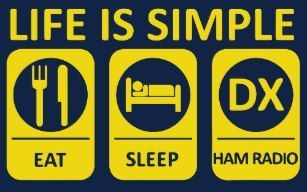A bit of history: The Technician license was created by FCC as part of the 1951 restructuring that expanded the old “ABC” system. This restructuring also gave us the Novice and Extra licenses, and renamed the old A, B and C licenses as Advanced, General and Conditional, respectively.
But why the Technician? There hangs a tale.
Before WW2, the frequencies above about 250 MHz were mostly unexplored territory – so much so that above 300 MHz was essentially unregulated! Anything above 30 MHz was “the ultra-highs”.
The war effort brought incredible advances in VHF/UHF/microwave techniques. New technologies went from lab curiosity to mass production in months rather than years, and by wars’ end there were mass-produced radars operating at 100 times the frequency of the 112 MHz radar that detected the incoming Pearl Harbor attack. Radar, television and plain old radio had a whole new spectrum to use.
And we amateurs got new bands, all the way up to 22 GHz.
The Technician license was originally created with the idea that there would be lots of people interested in the new frontier of UHF and microwaves, and the new technologies used for them. The idea was that those folks would be more interested in experimenting and tinkering than with operating, so the name “Technician” was applied. Since there was a treaty requirement for code testing, the basic 5 wpm code test was needed. The existing General written exam was considered adequate for anyone who would actually operate on those frequencies, so it was used for the Technician.
The original 1951 Technician license had all amateur privileges from 220 MHz and up – not only no HF, but no 6 or 2 meters! In those days, there was no manufactured amateur equipment for 220 and up, so a 1951 Technician really had to be a technician, either home-brewing or converting surplus from other radio services.
The Technician was *not* originally meant to be a step between Novice and General at all. Rather, it was meant to be a specific-purpose license, to increase the amateur presence above 2 meters.
But while the then-new Novice license was a big hit, the Technician didn’t get many takers at first. Only when 6 and then 2 meters were added to Technician privileges did the number of Technicians take off.
The effect of those changes was that many Technicians were really more interested in operating than in experimenting. But the FCC maintained the idea that the Technician was more about experimenting and tinkering than about operating, and that Tech was not a step between Novice and General. For years Techs could not be involved in RACES and similar things. Only in the 1970s did FCC’s attitude begin to change. This was reflected in Technicians getting Novice HF privileges and having the Tech written exam simplified.
73 de Jim, N2EY

